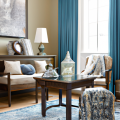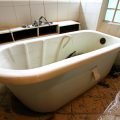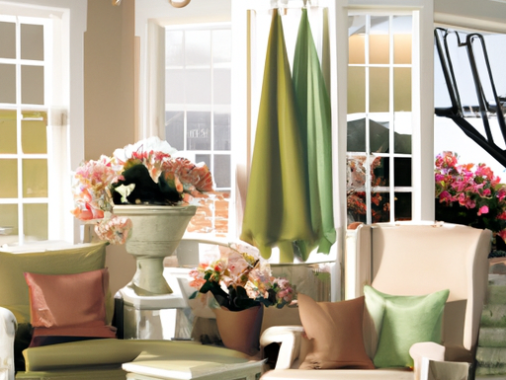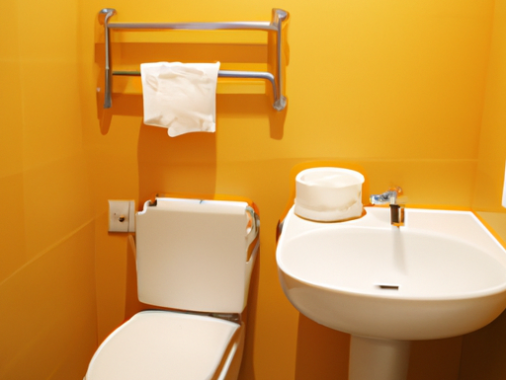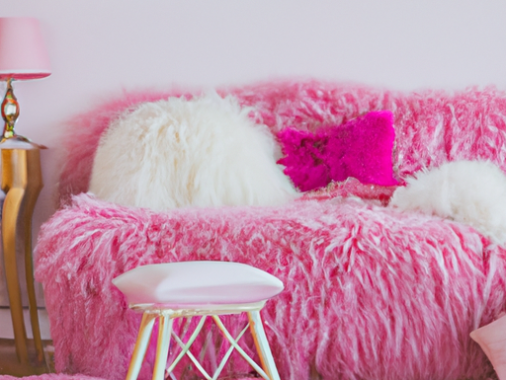-
Table of Contents
- Introduction
- The Benefits of Building a Modular Home Inside
- How to Choose the Right Modular Home Design for Your Needs
- The Pros and Cons of Modular Home Construction
- The Latest Trends in Modular Home Design
- Tips for Decorating a Modular Home Interior
- The Cost of Building a Modular Home Inside
- The Advantages of Living in a Modular Home Inside
- Q&A
- Conclusion
Introduction
Modular homes are an increasingly popular option for those looking for a cost-effective and efficient way to build a home. Modular homes are built in a factory setting, allowing for a more controlled environment and faster construction times. They are then transported to the building site and assembled on-site. Modular homes offer a variety of benefits, including cost savings, energy efficiency, and customization options. They are also more environmentally friendly than traditional homes, as they use fewer materials and require less energy to construct. With all these advantages, it’s no wonder that modular homes are becoming an increasingly popular choice for those looking to build a home.
The Benefits of Building a Modular Home Inside
Building a modular home inside offers a number of benefits that can make the process of constructing a home much easier and more efficient. Modular homes are built in a factory setting, which allows for greater control over the quality of the construction process. This means that the home is built to exact specifications and is constructed with the highest quality materials. Additionally, modular homes are built in sections, which makes them easier to transport and install.
The first benefit of building a modular home inside is that it is much faster than traditional construction methods. Modular homes are built in a factory setting, which allows for greater control over the construction process. This means that the home is built to exact specifications and is constructed with the highest quality materials. Additionally, modular homes are built in sections, which makes them easier to transport and install. This means that the entire process of building a modular home can be completed in a fraction of the time it would take to build a traditional home.
Another benefit of building a modular home inside is that it is much more cost-effective than traditional construction methods. Modular homes are built in a factory setting, which allows for greater control over the cost of materials and labor. This means that the cost of building a modular home is much lower than the cost of building a traditional home. Additionally, modular homes are built in sections, which makes them easier to transport and install. This means that the cost of installation is much lower than it would be for a traditional home.
Finally, building a modular home inside offers greater flexibility in terms of design. Modular homes are built in sections, which allows for greater customization of the home’s design. This means that the homeowner can choose the exact layout and features that they want in their home. Additionally, modular homes are built in sections, which makes them easier to transport and install. This means that the homeowner can choose the exact location for their home, which can be beneficial if they are looking to build in an area that is difficult to access.
Overall, building a modular home inside offers a number of benefits that can make the process of constructing a home much easier and more efficient. Modular homes are built in a factory setting, which allows for greater control over the quality of the construction process. Additionally, modular homes are built in sections, which makes them easier to transport and install. Finally, modular homes offer greater flexibility in terms of design, which can be beneficial for homeowners who are looking to customize their home.
How to Choose the Right Modular Home Design for Your Needs
When it comes to choosing the right modular home design for your needs, there are a few key factors to consider. First, you should think about the size and layout of the home. Modular homes come in a variety of sizes and floor plans, so it’s important to find one that fits your lifestyle and budget. You should also consider the type of materials used in the construction of the home. Modular homes are typically constructed with either wood or steel frames, and each has its own advantages and disadvantages.
Next, you should consider the features and amenities that you want in your home. Modular homes can be customized with a variety of features, such as energy-efficient appliances, upgraded fixtures, and custom cabinetry. You should also think about the type of climate you live in and the type of insulation you need to keep your home comfortable.
Finally, you should consider the cost of the home. Modular homes are typically more affordable than traditional homes, but they can still be expensive. You should compare prices from different manufacturers and look for any discounts or incentives that may be available.
By taking the time to consider these factors, you can ensure that you choose the right modular home design for your needs. With the right design, you can enjoy a comfortable and stylish home that meets all of your needs.
The Pros and Cons of Modular Home Construction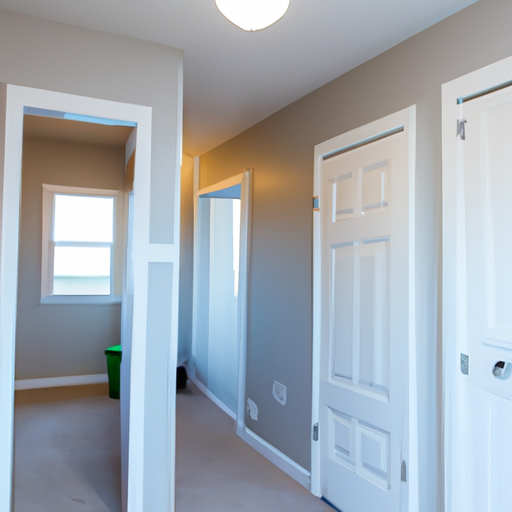
Modular home construction is an increasingly popular option for those looking to build a new home. This type of construction involves the assembly of pre-fabricated components in a factory setting, which are then transported to the building site and assembled on-site. While modular home construction offers many advantages, there are also some potential drawbacks to consider.
Pros
One of the primary advantages of modular home construction is the speed of the process. Because the components are pre-fabricated in a factory setting, the construction process is much faster than traditional construction. This can save time and money, as well as reduce the disruption to the surrounding area. Additionally, modular homes are often more energy efficient than traditional homes, as they are built with tighter construction standards and more efficient insulation.
Another benefit of modular home construction is the cost savings. Because the components are pre-fabricated, the cost of materials is often lower than traditional construction. Additionally, the labor costs are often lower, as the construction process is faster and requires fewer workers.
Cons
One potential drawback of modular home construction is the limited design options. Because the components are pre-fabricated, there is less flexibility in terms of design and customization. Additionally, some local building codes may not allow for certain types of modular construction, which can limit the options available.
Another potential issue is the quality of the construction. While modular homes are built to the same standards as traditional homes, there is always the potential for issues to arise due to the transportation and assembly process. Additionally, some modular homes may not be as durable as traditional homes, as they are not built on-site.
In conclusion, modular home construction offers many advantages, including speed, cost savings, and energy efficiency. However, there are also some potential drawbacks to consider, such as limited design options and potential quality issues. Ultimately, it is important to weigh the pros and cons carefully before making a decision.
The Latest Trends in Modular Home Design
The modular home design industry has seen a surge in popularity in recent years, as more and more people are looking for ways to create their dream homes without breaking the bank. Modular homes offer a unique combination of affordability, flexibility, and convenience that traditional home building methods simply cannot match. As such, the latest trends in modular home design are focused on creating homes that are both stylish and functional.
One of the most popular trends in modular home design is the use of open floor plans. Open floor plans allow for more natural light to enter the home, creating a more spacious and inviting atmosphere. Additionally, open floor plans allow for more efficient use of space, as furniture and other items can be arranged in a way that maximizes the available space.
Another popular trend in modular home design is the use of modern materials and finishes. Many modular homes are now being built with materials such as steel, glass, and concrete, which offer a sleek and contemporary look. Additionally, modern finishes such as stainless steel appliances, quartz countertops, and hardwood floors are becoming increasingly popular in modular homes.
Finally, energy efficiency is becoming an increasingly important factor in modular home design. Many modular homes are now being built with energy-efficient features such as solar panels, energy-efficient windows, and high-efficiency heating and cooling systems. These features can help to reduce energy costs and make the home more comfortable and efficient.
Overall, the latest trends in modular home design are focused on creating homes that are both stylish and functional. By utilizing modern materials and finishes, open floor plans, and energy-efficient features, modular homes can provide a unique combination of affordability, flexibility, and convenience that traditional home building methods simply cannot match.
Tips for Decorating a Modular Home Interior
1. Choose a Color Scheme: When decorating a modular home interior, it is important to choose a color scheme that will create a cohesive look throughout the space. Consider colors that will complement the existing architecture and furniture.
2. Utilize Wall Space: Modular homes often have limited floor space, so it is important to make the most of the wall space. Consider adding shelves, wall art, and other decorative items to create a more interesting and inviting atmosphere.
3. Add Texture: Adding texture to the walls and floors of a modular home can help to create a more inviting atmosphere. Consider adding rugs, curtains, and other textiles to add visual interest and warmth to the space.
4. Incorporate Natural Elements: Incorporating natural elements into the design of a modular home can help to create a more inviting atmosphere. Consider adding plants, wood accents, and other natural elements to create a more inviting atmosphere.
5. Invest in Quality Furniture: Investing in quality furniture is essential when decorating a modular home interior. Choose furniture that is both comfortable and stylish to create a more inviting atmosphere.
6. Utilize Lighting: Lighting can be used to create a more inviting atmosphere in a modular home. Consider adding lamps, sconces, and other lighting fixtures to create a more inviting atmosphere.
7. Incorporate Personal Touches: Incorporating personal touches into the design of a modular home can help to create a more inviting atmosphere. Consider adding family photos, artwork, and other personal items to create a more inviting atmosphere.
The Cost of Building a Modular Home Inside
Building a modular home is an increasingly popular option for many homeowners. Modular homes are built in a factory setting and then transported to the site of the home. This type of construction offers many advantages, including cost savings, faster construction times, and greater customization options. However, it is important to understand the cost of building a modular home before making a decision.
The cost of building a modular home will vary depending on the size and complexity of the home. Generally, the cost of a modular home is comparable to the cost of a traditional home. However, there are some additional costs associated with modular construction that should be taken into consideration.
The first cost to consider is the cost of the modular home itself. This cost will vary depending on the size and complexity of the home. The cost of the home will also depend on the type of materials used and the level of customization desired.
The second cost to consider is the cost of transporting the home to the site. This cost will depend on the distance between the factory and the site of the home. It is important to factor in the cost of transportation when calculating the total cost of the home.
The third cost to consider is the cost of installation. This cost will depend on the complexity of the home and the type of foundation that is required. It is important to factor in the cost of installation when calculating the total cost of the home.
The fourth cost to consider is the cost of interior finishes. This cost will depend on the type of finishes desired and the complexity of the home. It is important to factor in the cost of interior finishes when calculating the total cost of the home.
Finally, it is important to factor in the cost of any additional features or upgrades that may be desired. This cost will depend on the type of features desired and the complexity of the home. It is important to factor in the cost of any additional features or upgrades when calculating the total cost of the home.
In conclusion, building a modular home can be a cost-effective option for many homeowners. However, it is important to understand the cost of building a modular home before making a decision. The cost of the home, transportation, installation, interior finishes, and any additional features or upgrades should all be taken into consideration when calculating the total cost of the home.
The Advantages of Living in a Modular Home Inside
Living in a modular home has many advantages. Modular homes are built in a factory setting, which allows for greater control over the quality of the construction. This means that the home is built to a higher standard than a traditional home, and is more likely to be structurally sound. Additionally, modular homes are often more energy efficient than traditional homes, as they are built with energy-efficient materials and appliances.
Another advantage of living in a modular home is the speed of construction. Modular homes are typically built in a fraction of the time it takes to build a traditional home. This means that you can move into your new home much faster than if you were to build a traditional home.
The cost of living in a modular home is also typically lower than that of a traditional home. Modular homes are built in a factory setting, which allows for greater efficiency and cost savings. This means that you can get more home for your money when you choose to live in a modular home.
Finally, modular homes are often more customizable than traditional homes. You can choose from a variety of floor plans and finishes, allowing you to create a home that is uniquely yours. Additionally, modular homes are often more flexible when it comes to making changes or additions to the home.
Living in a modular home has many advantages. From the quality of construction to the cost savings, there are many reasons why living in a modular home is a great choice.
Q&A
1. What is a modular home?
A modular home is a type of prefabricated home that is built off-site in a factory-like setting, using modules that are then transported to the desired location and assembled on-site.
2. How much does a modular home cost?
The cost of a modular home can vary greatly depending on the size, features, and location. Generally, modular homes cost between $50 and $100 per square foot.
3. What are the benefits of a modular home?
Modular homes are typically more energy efficient than traditional homes, as they are built in a factory-controlled environment. They are also faster to build, as the modules are pre-built and then transported to the site. Additionally, modular homes are often more affordable than traditional homes.
4. Are modular homes safe?
Yes, modular homes are just as safe as traditional homes. They are built to the same building codes and standards as traditional homes, and they are inspected throughout the building process to ensure quality and safety.
5. Are modular homes customizable?
Yes, modular homes can be customized to meet the needs of the homeowner. Many modular home companies offer a variety of floor plans and features that can be tailored to the homeowner’s preferences.
6. How long does it take to build a modular home?
The time it takes to build a modular home depends on the size and complexity of the home. Generally, it takes between 8 and 12 weeks to build a modular home.
7. Are modular homes a good investment?
Yes, modular homes can be a good investment. They are typically more affordable than traditional homes, and they can be customized to meet the needs of the homeowner. Additionally, modular homes are often more energy efficient than traditional homes, which can save money on energy bills.
Conclusion
In conclusion, modular homes offer a great alternative to traditional stick-built homes. They are cost-effective, energy-efficient, and can be customized to fit any lifestyle. With the right planning and research, modular homes can provide a great living space for any family.
